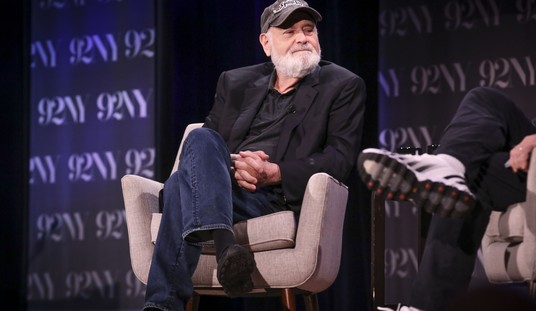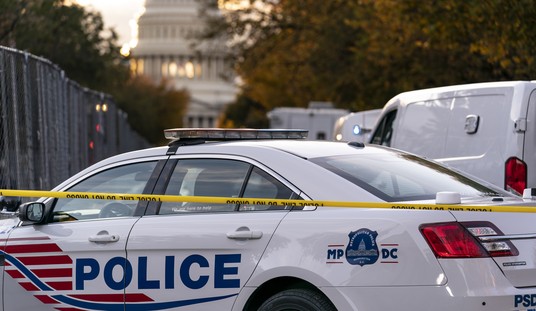BENTONVILLE, Ark. -- When Alice Walton, the Wal-Mart heiress and second richest woman in America, decided to build a Museum of American Art in her hometown deep in the Arkansas Ozarks, no one questioned her ability to spend money. Her daddy, Sam Walton, had left her a lot of it. Forbes puts her worth at $34.9 billion. What they questioned, expressed with bicoastal sneer and snark, was her ability to know what she was getting for daddy's money.
When she called the museum "Crystal Bridges," commemorating a natural stream to be traversed on bridges leading visitors to the art, the snobs got out their long knives, scoffing that the name sounded like a hillbilly stripper. She was regarded as a backwoods interloper in the Manhattan art world, a "culture vulture" forging a "false front for Wal-Mart," the naif peddling a hollow experience to the natives. The mascot of the state university, after all, is the feral razorback hog.
But Mrs. Walton, 64, (she kept her maiden name after two failed marriages) has loved art since, as a 10-year-old she bought her first "painting" at her father's 5-and-dime store on the town square, a print of Picasso's "Blue Nude." Five decades later she got the attention of the art world when she purchased "Kindred Spirits," a spectacular work of the Hudson River School by Asher B. Durand, for $35 million from the New York City Public Library. The art world howled. The painting is a piece of cultural history commemorating the friendship of Thomas Cole, the landscape painter and the poet William Cullen Bryant. It was thought much too important for the eyes of rubes.
But the intrepid collector, who had painted watercolors of flora and fauna with her mother on camping trips while daddy and her three brothers fished, had other ideas. "Kindred Spirits" was the perfect centerpiece for the regional museum to link art and nature. She hired architect Moshe Safdie, renowned for integrating buildings into the landscape, to design the museum.
Recommended
The rustics cheered her, watching construction from an overlook deck, and came out in greater numbers when the $1.2 billion museum opened in November 2011. Eight of every 10 of the million visitors so far have been from Arkansas and its "touching states," Missouri, Tennessee, Mississippi, Louisiana, Texas and Oklahoma.
A stream of bright yellow school busses pulls up to the museum with squealing teenagers from the surrounding states eager for their first look at real art.
What they see is a unique collaboration of art and nature -- walking trails punctuated by witty sculptures of bronze bears, a tortoise, a hare, as well as magnificent abstractions by modernists. The museum is a natural art education where realistic, classic, pop and abstract art are in conversation with each other, challenging different points of view. Norman Rockwell's famous "Rosie the Riveter" meets Charles Willson Peale's "George Washington." Andy Warhol's "Dolly Parton" meets "Cupid and Psyche" by Benjamin West. One wing displays stunning paintings from the nation's colonial past. Donald Judd, Mark di Suvero and Jeff Koons are the contemporary stars.
Thousands of children from elementary school through high school have taken educational tours. Their transportation, lunches and even substitute teachers are paid from a $10 million endowment from the Willard and Pat Walker Charitable Foundation. In one study, children who had visited the museum demonstrate critical thinking skills and an openness to aesthetic values, recalling visual details of what they had seen.
The museum surprises critics, too. Alice Walton is in the ranks now with other zillionaires -- the likes of Henry Clay Frick, J.P. Morgan, John D. Rockefeller and Duncan Phillips -- who turned their collections into museums and libraries.
Wal-Mart, headquartered in Bentonville, has contributed to the transformation of Northwest Arkansas, once the poorest part of a poor state. Surrounding towns have spruced up the town square, invested in schools and infrastructure, and now the region is the most prosperous part of the state (and led the political transformation of Arkansas from stubborn blue to reliable red). Travel magazines call Bentonville one of the "hottest" travel destinations, and the town has grown from 6,000 when Sam Walton opened his first Ben Franklin 5 and 10 Store on the town square in 1950 to more than 65,000 now. A new boutique hotel just off the square exhibits avant-garde art in the lobby. There's a Wal-Mart Museum on the square, with a video of Sam Walton in a grass skirt dancing the hula on Wall Street, celebrating an 8 percent profit for the first year Wal-Mart went public.
This is the week in May when collectors rush to New York for spring auctions to spend their millions on additions to museum collections. In Bentonville such art is free for the watching, with the sun shining after a hard winter and dogwoods in bloom on the mountains. Sometimes life feels like a masterpiece.
























Join the conversation as a VIP Member